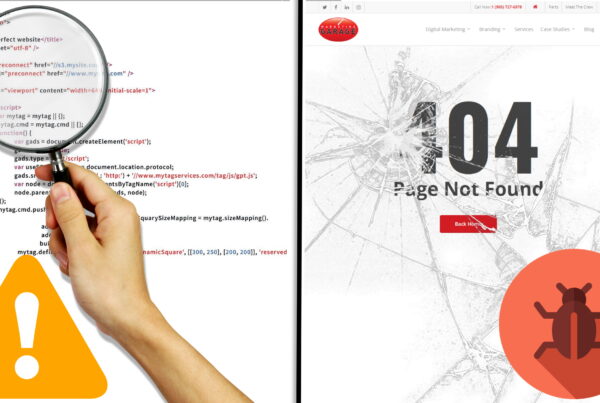
With social media marketing, it can be overwhelming to figure out what you should be doing, what you shouldn’t be doing, and how to actually tackle it. But don’t worry, we’ve got you covered with the following 7 must-follow social media best practices you should be adopting in 2021.
1. Choose Which Social Networks To Use (And Not Use)
In order to figure out which social networks to use, you need to know who your target audience is. Figure out their demographics (age, gender, where they live, etc.), what stage of life they’re in (student, parent, retiree), and, if you can, what they do in their spare time. Next, take a look at the demographics and traits of the social platforms you’re considering and see if there’s a match. Here are some examples of the insights you should be looking for:
Instagram:
- 34% of Canadians use this platform
- The biggest age group that uses it in Canada are between 18 and 24
- This is a very visual platform, described as the “coffee table book of the internet”
Twitter:
- This platform skews male
- Has a bit of an older demographic with the biggest age group being between 25 and 34
- Very political and news focused
Facebook:
- Still the largest platform in terms of monthly users with 2.8 billion in 2021
- Similar to Twitter, the biggest age group here are people between 25 and 34
- 77% of adults on Facebook have a secondary education
2. Have A Clear Plan For What You Want To Achieve With Social Media Advertising
A lot of brands these days start-up social profiles and begin throwing money behind a strong social presence without really understanding why they are doing it. As a Toronto marketing company, the answer we hear most frequently is “everyone else is doing it so I feel like we should too”.
This sort of thinking is dangerous. How will you know if you’re succeeding or failing? The first step in cultivating a social media strategy is to start with the business goal you want to achieve. Then, tie that to a corresponding social media goal and its related metrics. Below are a few examples:
| Business Objective | Social Media Goal | Metrics |
| Grow the brand/ business | Awareness and/or engagement | Awareness: Followers, impressions, reach Engagement: Comments, likes, shares |
| Drive leads and sales | Conversions | Click-through-rates, cost-per-click, email signups, conversion rate |
| Improve customer retention | Consumer sentiment | Reviews, star ratings, net promoter score |
Conduct An Audit
By conducting a social media audit, you can gather benchmarks for your brand to measure against. This will help you gauge what’s working, what’s not really working, and give you an idea of how and where you can improve your performance. An audit will also help you determine if your profiles are in tip-top shape and give you ideas on how to further optimize your presence.
Need help with your audit? Check out our blog How To Do A Social Media Audit: An 8 Point Checklist To Totally Rock It.
 3. Continually Monitor And Respond Promptly
3. Continually Monitor And Respond Promptly
It’s important to keep a close eye on what people are saying about your brand on social media. That way, you can track, analyze, and respond to those conversations. If you don’t you could be missing out on valuable insights for your business.
The second part of this is to make sure you are responding promptly and appropriately. If you don’t, you will most likely fall victim to the soapbox effect (meaning you just use social media to blast out your content and that’s it). In order to leverage social media to increase leads, brand awareness, or any other goal you should be fostering conversation and building relationships with your customers.
4. Keep An Eye On The Competition’s Social Media Advertising
If you don’t, you could be missing out on very key information. Learn what they’re doing and decide what you should (or shouldn’t) also be doing – maybe you’ll be inspired! This is also another great way for you to gauge your social performance. Take a look at things like their audience size, engagement, and post frequency to see how you measure up.
5. Establish A Social Media Voice And Tone
The way you frame your messages on social media can go a long way to helping you reach your goals. It’s important to contemplate how your social presence will mesh with your other external efforts and make sure that you’re staying consistent across all avenues. The best way for me to put it is to think about the ‘vibe’ of your business and the kinds of qualities or traits your business would have if it were a real person. Think of a few adjectives to define this and use these to guide you. Here are a few examples:
| Traits Of Business | Description | Voice & Tone |
| Funny, light-hearted | Copy should not be afraid to make people laugh and not take itself too seriously. | Humorous (but not too goofy), tongue in cheek, playful |
| Authoritative | Copy should be well researched and be deliberate in its delivery. | Confident, strong, authentic, purposeful |
| Helpful | Copy should sound like someone who wants to genuinely help and should take the time to explain concepts in detail. | Reassuring, genuine, friendly, honest, insightful |
Something else to keep in mind is that social media is a conversational, casual space so it’s best to keep your copy as simple as possible. This means avoiding jargon and writing closer to how you talk versus how you write papers or business emails.
6. Use Data To Determine When To Post
What time of day should you post?
This all depends on the social platforms you use. For example, LinkedIn is more of a professional, business network and as such people are more likely to browse during work hours versus Instagram that’s more of a leisure time platform. What’s best is to try posting at different times of the day and tracking your engagements and conversions for each time to determine what works best for you and your audience.
How often should you post?
This also depends on a couple of different factors. Again, take a look at your competition; see how often they’re posting and what kind of engagements they’re getting. Use social media reports to track engagement on your posts to find a good balance. As a Toronto marketing agency, we generally recommend posting at a minimum twice a week.
7. A/B Test Your Messaging And Content
By A/B testing, you can learn a lot about what kind of messaging and content works best for your audience. To A/B test:
- Separate your audience into two random groups
- Show a different message variation to each group
- Compare the responses with your goals (whether that be CTRs, engagements, etc.)
Make sure you’re only changing one thing at a time though, otherwise you’ll be guessing which change sparked their interest. Not sure what to test? Here are a few examples:
Post copy:
- Use a statistic
- Play with the length of your message
- Use emojis
- Change up the tone of voice
Post creative:
- Using people vs. just graphics
- Image vs. video
Call-To-Action (CTA):
- Frame it differently ex. ‘Use App’ vs. ‘Install Now’
- Try changing your CTA for different stages in the purchasing funnel ex. ‘Get Started’ vs. ‘Buy Now’
- Sometimes it can be off-putting for consumers when you ask for the sale too soon. For example, on an ad advertising a car, having a CTA that says ‘Buy Now’ wouldn’t be appropriate as people don’t generally purchase a car directly from an online advertisement.
Track Your Results And Adjust Accordingly
A/B testing is really all about finding out what’s working and what’s not so you can always be improving your performance. This is why it’s so important to continually track your results and adjust accordingly. For instance, if you find that your audience responds better to ads showing people vs. ads with just graphics and text, then make sure all your ads moving forward show people!
The Marketing Garage is an award-winning Toronto digital and branding marketing company that cuts through the digital marketing hype to deliver real results. Our unbiased, data-driven audits help you understand what’s working. And what’s not. Read some marketing case studies or give us a call to pop the hood on your marketing.
How else can Digital Marketing help you?
Learn MoreAre you ready to have a conversation?
Talk To UsMore Advice From a Toronto Marketing Company






2 Comments